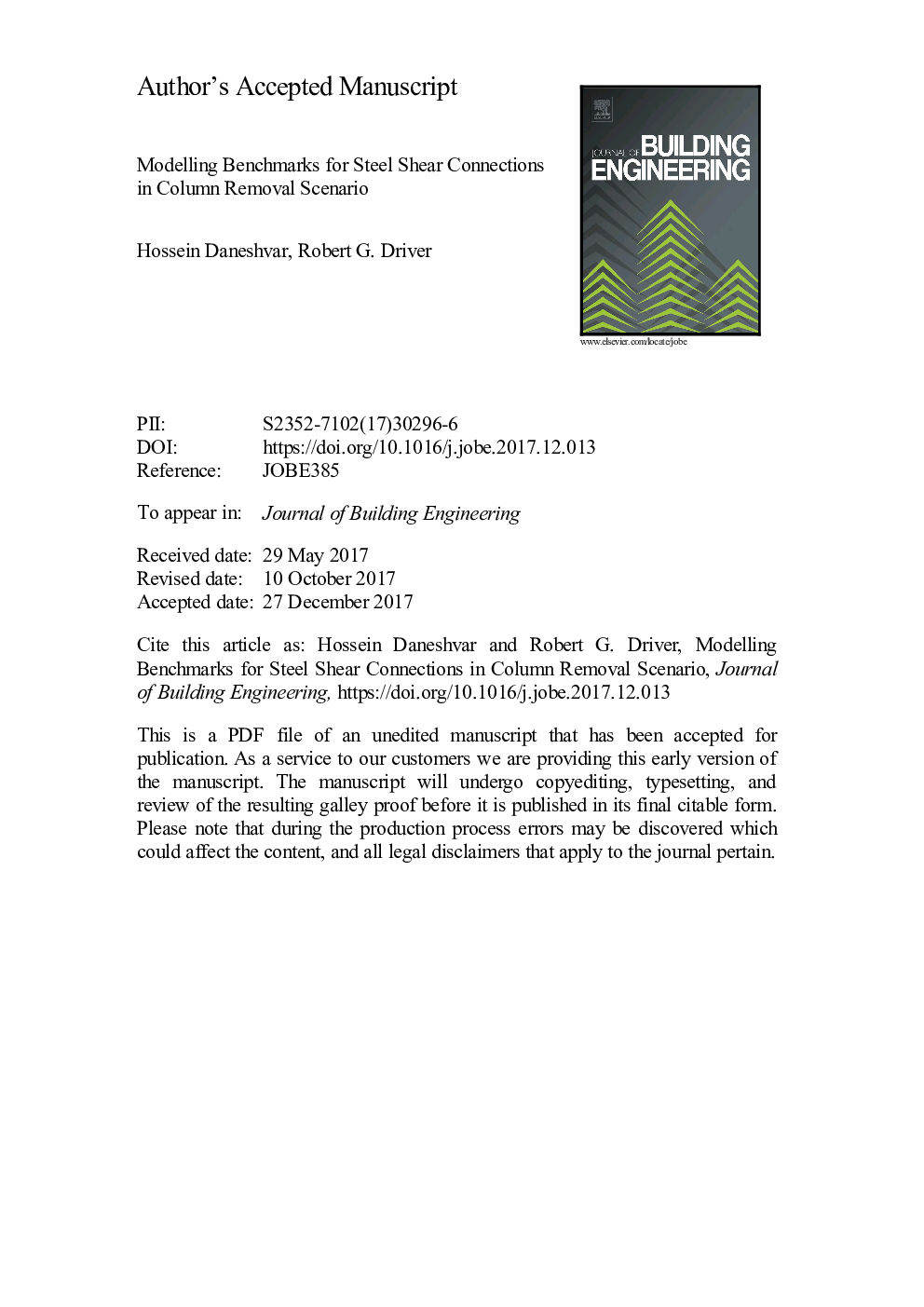| Article ID | Journal | Published Year | Pages | File Type |
|---|---|---|---|---|
| 6750000 | Journal of Building Engineering | 2018 | 42 Pages |
Abstract
Owing to recent advances in modern computing techniques, finite element analysis has become a practical tool for a variety of structural engineering problems, including research challenges involving extreme loading of steel structures. In order to investigate the structural integrity and robustness of the components of steel structures, including the connections, experimental studies are required. However, these experiments are costly and time-consuming, and can be supplemented economically by using high-fidelity finite element models that can accurately mimic the response of the connections. Highly nonlinear behaviour of steel connections in a column removal scenario makes the nonlinear finite element method a suitable option in evaluating the responses and failure modes. However, some challenges must be overcome in order to reach the accurate converged solution. In this research, the challenges involved in numerical studies for simulating the performance of steel shear connections when an adjacent column has been compromised are discussed. Modelling definitions for performing highly nonlinear analyses are addressed and recommendations are made regarding obtaining verified results using available experimental data. A shear tab, as one of the simplest shear connections, is utilized to establish benchmarks in the general process of three-dimensional finite element modelling of steel shear connections. The test results from an experimental program following the same loading pattern are utilized to validate the procedures. The validated model can then be used to mimic the behaviour of other common bolted steel shear connections, such as angles or tees, due to the similarities of the behaviours and failure modes under extreme loading conditions.
Keywords
Related Topics
Physical Sciences and Engineering
Engineering
Civil and Structural Engineering
Authors
Hossein Daneshvar, Robert G. Driver,
